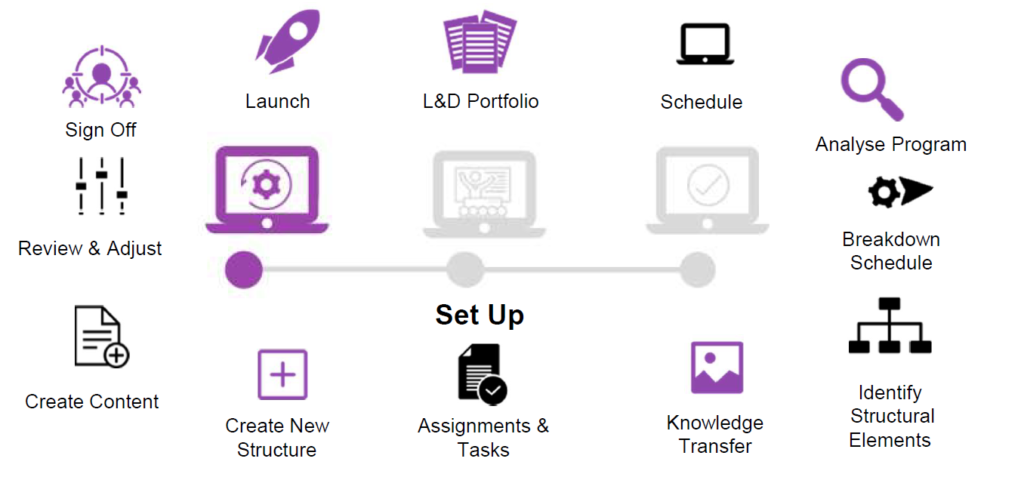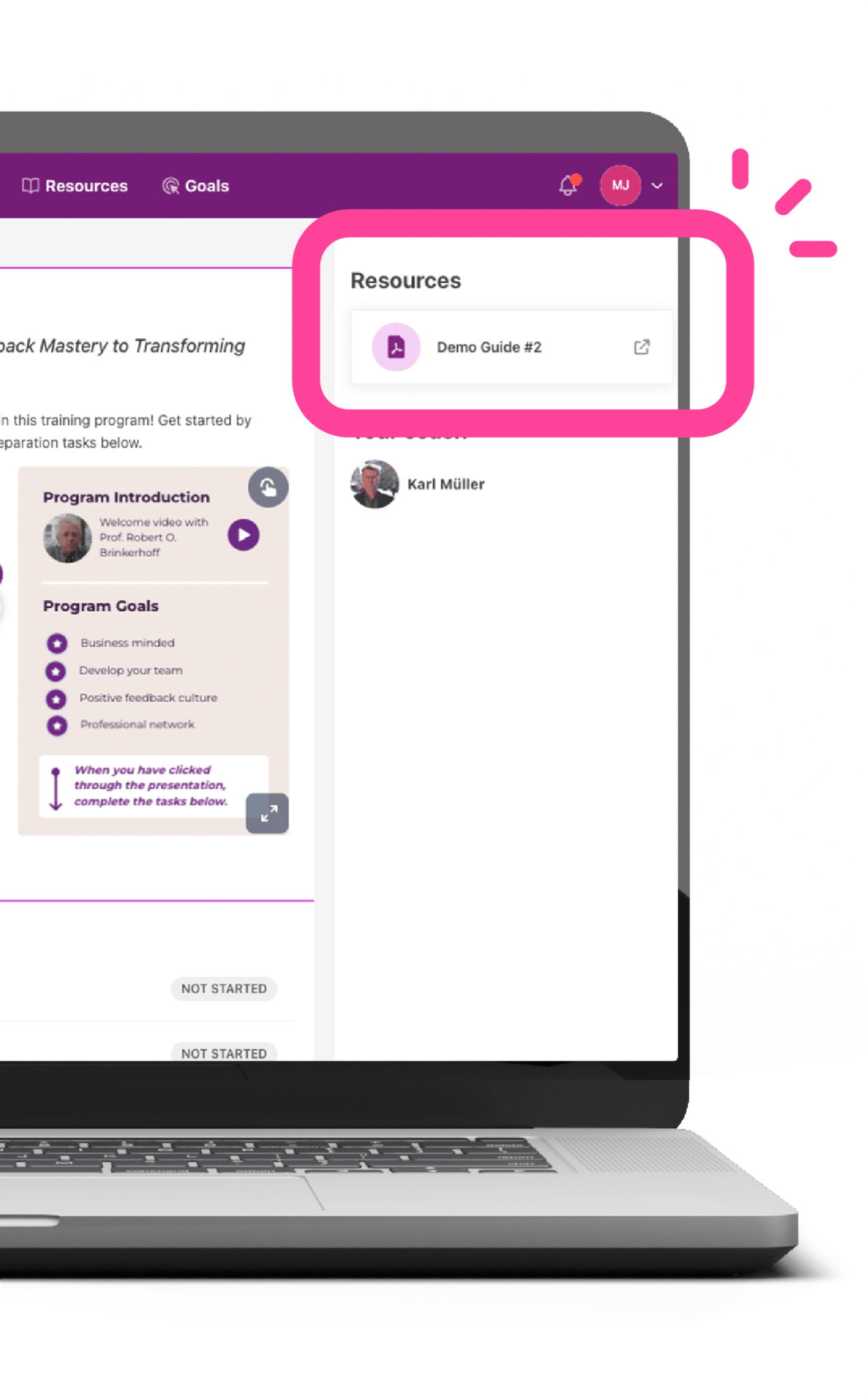The current Coronavirus situation has led to a number of travel restrictions coming into place at an alarming rate and more people working from home. An increasingly urgent question that we are facing from customers is what they can do with their Learning and Development programs that are scheduled to be run in the next few weeks.
The problem statement is: A program needs to be delivered in two or three weeks, participants will not be collocated, we only have basic virtual facilities but we need this program to go out.

This is a similar challenge to that which Promote has been helping customers with for a number of years. Our consultants are experienced at working with customers to create greater performance from L&D initiatives, whilst reducing face-to-face time, or even creating completely virtual programs. To take into account the current situation, we are using an intermediate approach.
Our response is two-fold. The “near term” solution addresses converting a Learning and Development program into a no-face-to-face option that works with an acceptable level of quality and knowledge transfer. However, we also know that this might not be the optimal solution for delivering performance related initiatives going forward. It’s a near term solution for an near term problem and not a long-term recommendation.
We are taking a pragmatic approach here. Whilst there are a number of virtual classroom offerings available, not least Adobe Connect and Microsoft Teams, a large number of facilitators and participants will not necessarily have immediate access to these immediately. There is also a learning curve in terms of how to use these. However, most people should have access to a personal computer and a video conferencing software, so these are the tools that we are focusing primarily on for the immediate short-term.
What we are steering away from, for the most part, is simply replacing a classroom face-to-face event with a virtual face to face event. Whilst this sounds like the most obvious approach, there are challenges with doing this. The main ones are that this approach does not encourage engagement, interaction between participants is difficult, particularly if they are sitting by themselves, and that long virtual sessions are fraught with problems. We might be able to get a program delivered but at what cost?
Instead, for a near term solution, we are suggesting a change in approach. Where much of the knowledge foundation is delivered beforehand, either in terms of basic learning videos, or theory sessions using voice over PowerPoint. We are moving the focus of the live session from one where theory/knowledge is imparted to the place where findings are discussed, clarification given, examples are taken from participants. This does two things, it focuses on how the knowledge can be applied, which is more engaging for virtual participants but it also takes the pressure off the instructors by creating a dynamic that is easier to handle.
The Promote platform supports our approach because it provides a backbone around which training can be structured. The short-term solution is to provide a virtual training that is supported by pre-and post-assignments. The key being that much of the actual knowledge transfer happens outside of the virtual classroom. Our aim being to reduce as far as possible the amount of time participants will need to spend in virtual classrooms, whilst still giving them what they need to not only learn a subject but also be able to put it into practice.
Be aware that we will probably have to reschedule these learning events. A two-day, face-to-face training might well have to become a two-week blended approach, with one or two relatively short live virtual sessions. The actual time dedicated to the program might be similar for both learner and instructor but we will have to stretch the journey in order to reach the result we want. The upside is that we should also be able to maintain, or even increase, the value that we generate from the training.
The following is an approach that can be used to turn a face to face event into a virtual training:
- Look at the L&D Portfolio: Look at the learning portfolio and identify which programs need to be adjusted most urgently.
For each of the programs identified:
- Address the proposed schedule: What is the original schedule in terms of time scale and what are the options for adjusting this schedule?
- Analyze each program: Evaluate for each program.
- Purpose of the program: Intended output, level of complexity.
- Determine the instructor/SME: level of technical ability, ability to adjust approach.
- Determine the target group: level of technical ability, geographic spread.
- Program requirements: Expectations on participants following program, amount of knowledge transfer, potential performance outcomes.
- Organizational tools available: Video conferencing, Promote or LMS, ability to receive virtual training. Set ambition levels accordingly.
- Break down the existing schedule:
- What elements relate to the structure of the program (e.g. Kick-off, introduction, program schedule)?
- What elements relate to knowledge transfer (e.g. theory, skill development)?
- What elements relate to assignments and tasks, in terms of building awareness of the need for application of the knowledge, current situation, participant relevance, discussion, practice, feedback, alignment to my role, and application at work (e.g. what is the current situation?, how can I apply this in my team?)?
4.1. Structural elements: Structural elements can entirely be moved online and conducted by Promote or in some cases through an LMS.
4.2 Knowledge transfer sections: It’s important that video / voice over PowerPoint for the introduction of knowledge is used only when it’s absolutely crucial to the program. This means identifying what is a must-have, what is a nice to have, and what can be excluded. Then making a choice. Broadly speaking, we are looking at breaking these down into the following areas.:
- What must be delivered by an instructor/subject matter expert.
- What elements are introducing new knowledge and what elements are follow-up, clarification, or related to application.
- What can be delivered digitally using voice over PowerPoint/pre-recorded videos, or learning literature via a platform, such as Promote.
- What absolutely has to be delivered live.
4.3 Assignments and tasks: These elements can be delivered pre-session or post-session via Promote or some LMSs through the creation of assignments. Required interaction between instructors, SMEs, participants and their managers can then be created through specific types of tasks for each assignment.
- Create new structure: Redistribute the key components into pre-training, live training, and post-training elements.
- Create Content:
- Create assignments and tasks in Promote/LMS.
- Adjust existing or create new knowledge foundation material by using video, voice over PowerPoint, training literature, etc.
- Create schedule for live sessions: What is the intended input from Promote, what targeted participant engagement do I want to create (input of good examples, questions, what needs to be clarified in terms of theory already delivered, what is “good practice”, are there small elements of theory that can be added? etc.).
- Review and Adjust: Once the skeleton of the program has been put together, the assignments and tasks created, the whole program needs to be reviewed in terms of flow. Most importantly here is to ascertain whether the pre-session assignments build up to and provide the live session with the right level of input to enable the live session to be interactive and relevant. The post-session assignments need to be reviewed to ensure that they flow from the live event and that there are inter-dependencies throughout.
- Sign off Program: Ensure that the program meets the stakeholder’s requirements in its current form.
- Launch Program: Kick the program off, introduce the approach to participants, help them overcome any barriers (real or perceived), and ensure ongoing facilitation throughout.
- Evaluate and Adjust: Following each stage, evaluate and adjust according to what actually happened vs what is supposed to happen.
This process can be used for programs that currently contain single or multiple modules.
In terms of time and depending on the type of program, Promote is able to adjust the basic structure, assignments and tasks to be created within a day or two. The creation of new videos or voice over PowerPoint will take a little longer depending on the level of quality required. However, if we are looking at good enough, this can be achieved relatively quickly – depending on the resources at hand.



